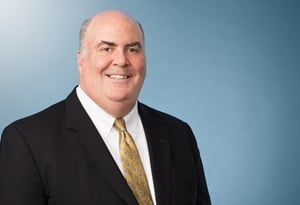Construction After COVID-19: Mitigating Design-Related Risk in a Post-Pandemic Paradigm
Among various other disruptions and turbulence that COVID-19 has brought to the construction industry, it has also introduced new concerns about the way we use and design public spaces. These insights provide new and distinctive opportunities — and risks. What design changes should professionals put in practice to prevent the spread of future pandemics? What risks arise from new ways of designing space and projects? Owners and construction partners need to consider and provide for risks as the stakes of construction evolve in new and uncertain ways.
Design professionals are already thinking about how to design future (and retrofit existing) buildings to stop the spread of contagions like COVID-19. For example, designing new office floor plates will involve balancing safety and an effective use of space. HVAC systems need to be reconsidered in a time when submicroscopic organisms can thwart traditional filtering and energy distribution systems. Reconsidering access points and how people move through vertical spaces are new challenges, too.
However, new ideas and approaches always carry the risk that they may fail, and the stakes of failure have never been higher. Failure means claims. As one example, the post-COVID-19 world could usher in claims that building entrances were inadequately designed to screen and separate potential carriers. Similarly, design professionals may see claims that an HVAC system failed to properly zone areas of the building, allowing contagion to move between zones. Emerging pre-COVID-19 design paradigms — like an emphasis on open floor plans — may invite claims that an office design defectively failed to properly social distance.
Unfortunately for owners, design professionals often carry professional liability policies far below a contractor's commercial general liability (CGL) limits. However, design errors have the potential to lead to losses that far exceed those limits. To mitigate the risk of an under-insured design professional, owners need to consider Owners' Protective Professional Indemnity (OPPI) insurance. OPPI protects the first-party insured against direct loss due to design defects by covering losses that exceed the limits of the designer's professional liability policies.
Knowing when to obtain OPPI and what level of coverage makes sense requires balancing a number of considerations. OPPI only pays benefits after the insured has incurred losses that exceed the self-insured retention amount. Payments from the design professional go to satisfy the retention. Typically, OPPI coverage is co-extensive with the design professional's liability — meaning that if the owner has waived certain claims or damages against the design professional, OPPI will not pay out for losses incurred from such claims. As a result, Owners need to coordinate purchasing OPPI when negotiating the design professional's contract. Owners may mitigate this additional risk with a "limit of liability" endorsement, which provides coverage regardless of the owner's inability to recover against the design professional.
Navigating the post-COVID construction environment will be complicated by new and unfamiliar risks. Now more than ever, careful consideration of these risks is essential before a project commences.
This article summarizes content from Bruner & O'Connor on Construction Law. For more information on this topic, or for additional citations, see § 11:579.
Faegre Drinker’s Coronavirus Resource Center is available to help you understand and assess the legal, regulatory and commercial implications of COVID-19.



